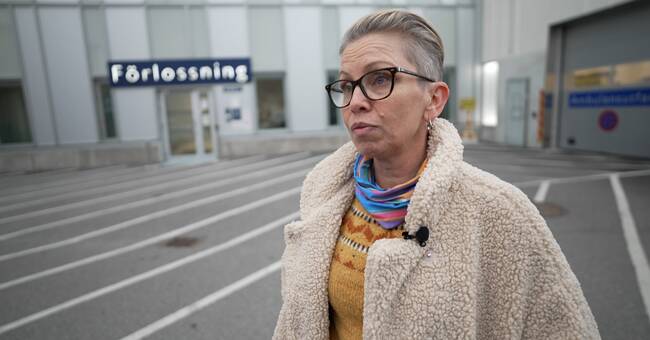According to the National Board of Health and Welfare, there is a shortage of midwives in 19 out of 21 regions.
In Stockholm, maternity managers and midwives have recently stopped protesting against the work environment and lack of resources.
In Västerbotten, the lack of staff means that BB in Lycksele must close for three weeks over Christmas and New Year.
Reports of the strained work environment have also been made at the births in Lund, Östra Hospital in Gothenburg and in Umeå.
- We generally see that midwives leave their jobs and that the situation is tough from north to south.
Right now it has bubbled over for a group of midwives in Stockholm, but this can occur anywhere, says Åsa Mörner, midwife and union board member of the Healthcare Association.
- Nowhere can you really work like the best, a midwife with a mother.
Today, you run between three to four births per midwife, says Åsa Mörner.
Requirements: Higher pay and better working environment
From the Swedish Healthcare Association's side, the most important requirement is a substantial wage investment.
- It is incredibly much about the work environment, but to get away from the problems we need to become more midwives, and to become that we must attract with good conditions.
We can do this, among other things, through good salary development, where it pays to be experienced, says Åsa Mörner.
According to the Swedish Medical Association, it is not enough just to point to the regions as responsible for maternity care.
They want the government to appoint a national coordinator to, for example, follow up the regions' use of resources.
- There needs to be a real investment for you to feel just as safe no matter where you live.
National money and national coordination are needed, says Åsa Mörner.
Åsa Mörner is a board member of Vårdförbundet, a board member of the Örebro division.
Photo: Private
Minister of Social Affairs: Major investments are being made
Minister of Social Affairs Lena Hallengren writes in a comment to SVT Nyheter that the government has pushed for money.
“Great investments are being made from a national point of view.
Since 2015, the government has allocated SEK 7.6 billion to maternity care and women's health and is investing an additional SEK 1.5 billion in 2022. The money will, among other things, go to the regions' work with a cohesive care chain from pregnancy to childbirth and aftercare.
The National Board of Health and Welfare has been commissioned to formulate national guidelines for maternity care.
The government has also decided on several government assignments to support the development of knowledge-based care ”.
According to Åsa Mörner, the investments made so far have not helped.
- When we have contact with our elected midwives around Sweden, no one can see that more midwives have been added to the operations.
This money has not been invested in midwives.
In the video above, the midwifery student tells why only four of 31 of her classmates can imagine working in maternity care after graduation.

